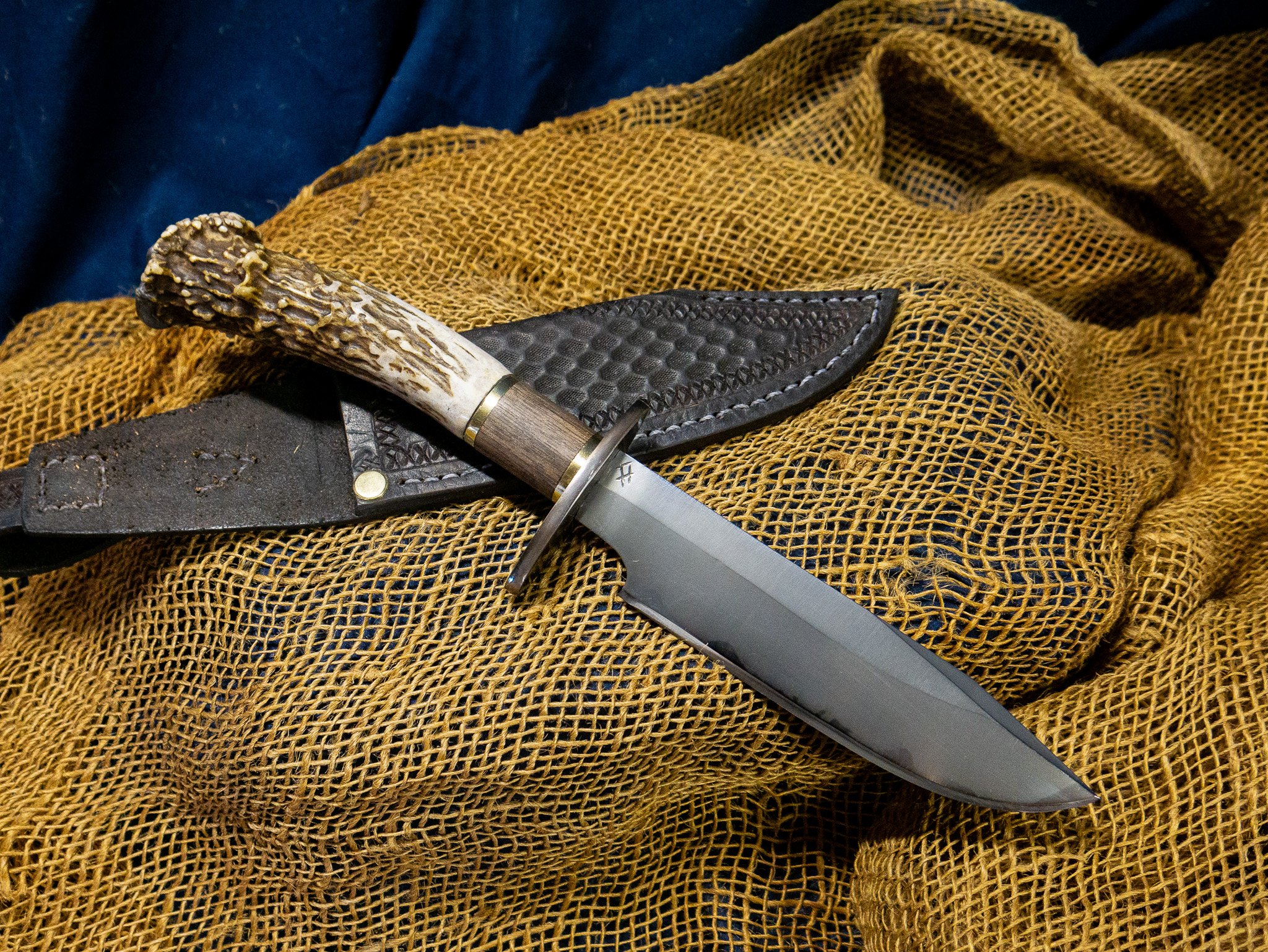
Knife Steel
It can be overwhelming when deciding on a knife to buy. Just as important as the intended use of a knife, is the steel that it is made from. There’s much more to it than High Carbon VS Stainless, and it can be a task when deciding what to get.
STAINLESS: Everyone knows stainless steel, it has been the modern advancement in cutlery that allows for less maintenance as high carbon, but can be very expensive for quality stainless that holds an edge for a long time. Here at The Rainy Forge, I don’t currently work with a lot of stainless steel, as proper tempering and hardening requires additional equipment that I hope to one day acquire. I can however easily work with pre-hardened stainless blanks.
TOOL STEEL: One choice for High Carbon is tool steel. A few tool steels that I use are W2, O1, and D2. These steels are great for durability and edge retention. You should chose a knife made from tool steel if you’re looking for something that is built to last, and can be heavily used for chopping and hacking.
KITCHEN KNIFES: In the culinary world, often your knife becomes an extension of your arm. Over the past decade or so, there has been a huge boom in the high carbon kitchen knife world, and knowing what to get is key. My favorite budget steel to use is 80CRV2. This steel has a bit of chromium in it, aiding in rust and patina prevention. The steel can also be hardened nicely to 60HRC or slightly higher, depending on your needs. A few other good steels for kitchen knives that I do are 15N20, and 52100. Both offer rust resistance, great edge retention, but will patina over time, especially when exposed to acidic foods. My chef knives have found there way into professional kitchens across the nation, one is even currently serving a chef in Las Vegas.
BUDGET KNIVES: If you are on a budget, but still want an excellent, well performing, high carbon knife, look no further than here. 1095 and 1084 are your best friends in the affordable range. While some may say these are “basic” or “started steels”, the truth is far different. While both steels are easy to heat treat and forge, both offer excellent qualities in sharpness and edge retention. It is never a bad thing to have a knife made from either, and they are only “budget” steels because of their availability on the market.

